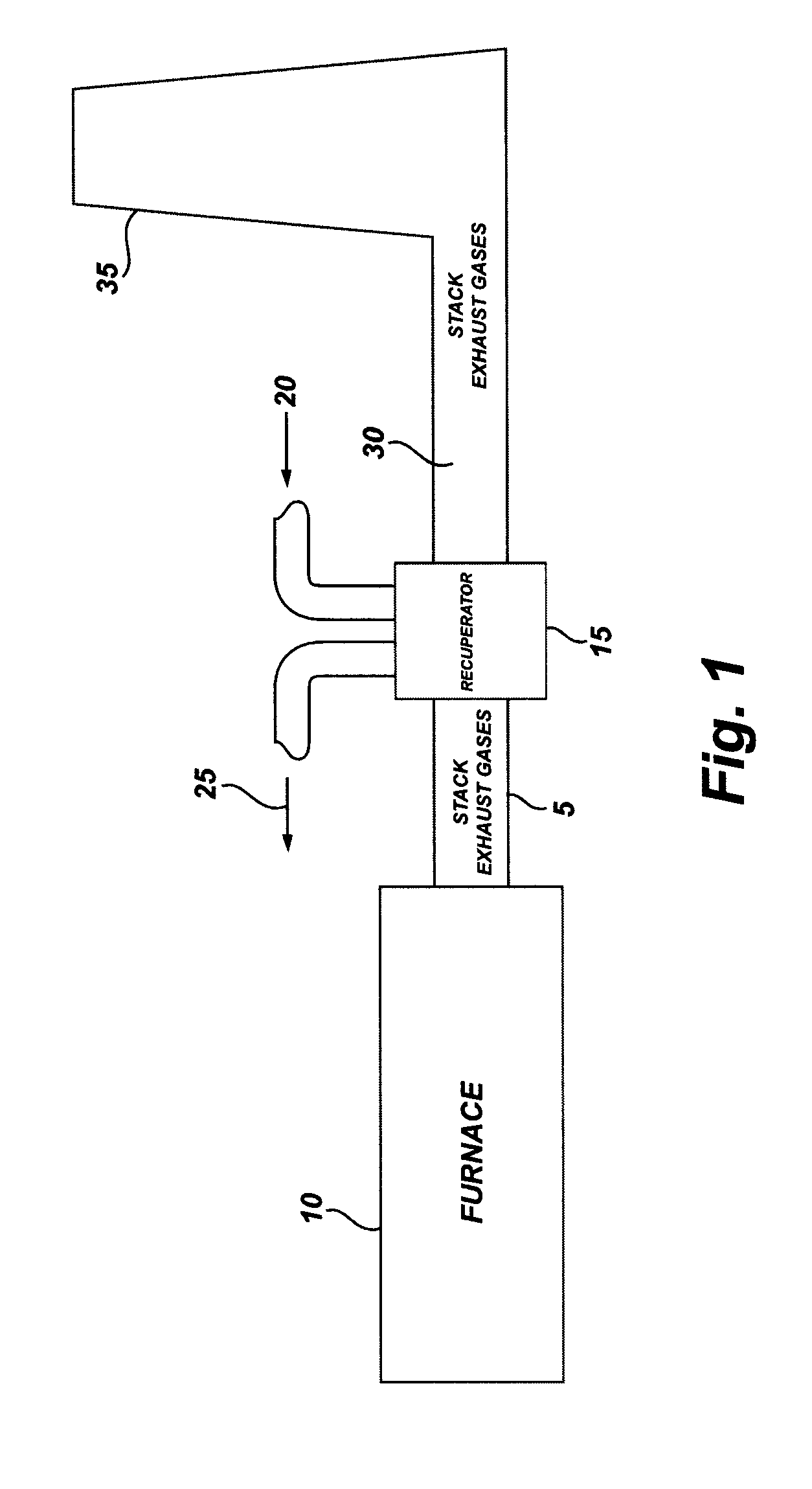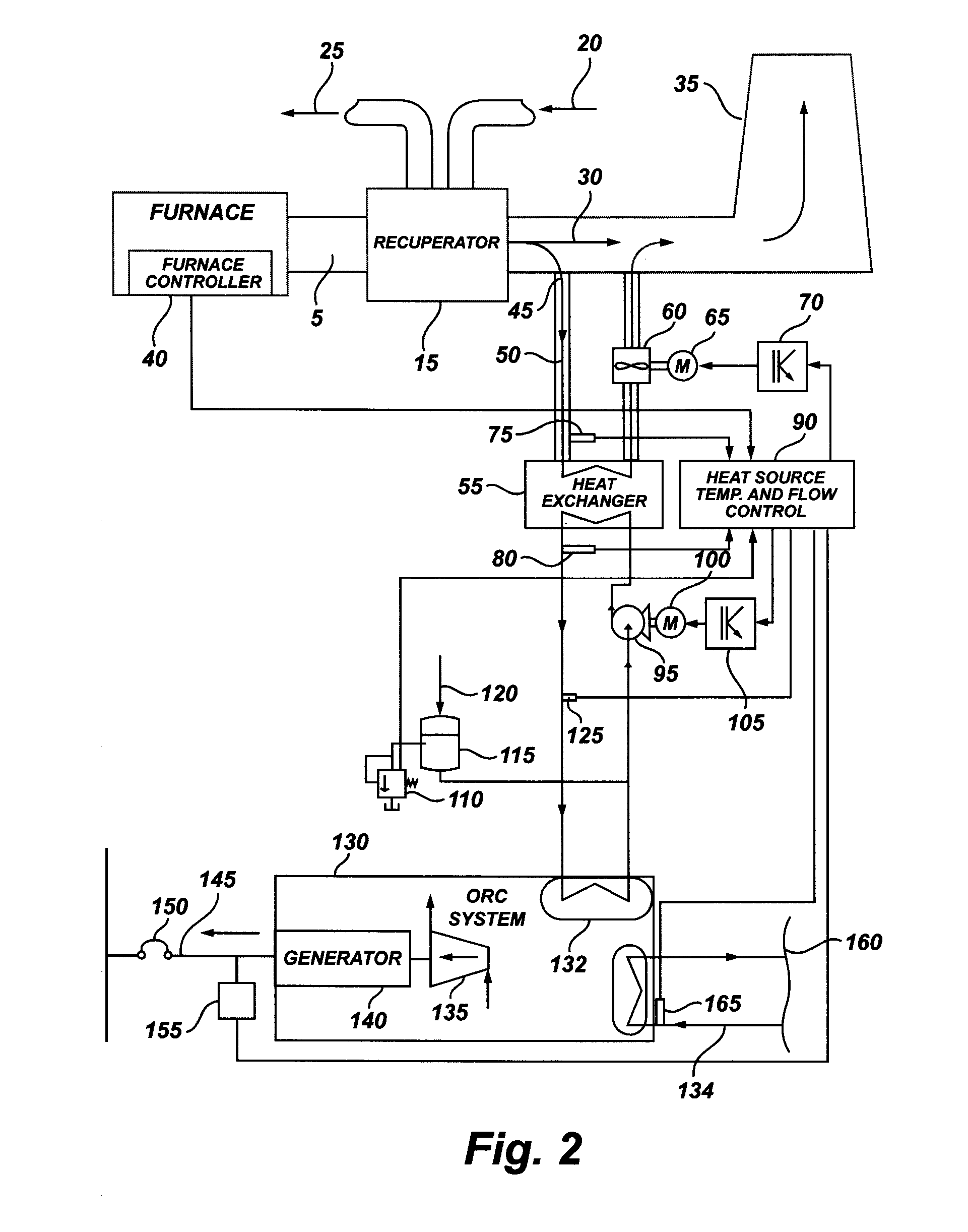Energy Recovery System and Method
a technology of energy recovery and energy storage, applied in the direction of lighting and heating apparatus, greenhouse gas reduction, instruments, etc., can solve the problems of wasting a large amount of heat by releasing hot gases, unable to transfer to steel, and finally dispersing into the atmospher
- Summary
- Abstract
- Description
- Claims
- Application Information
AI Technical Summary
Benefits of technology
Problems solved by technology
Method used
Image
Examples
Embodiment Construction
[0012]FIG. 2 illustrates in schematic diagram form the functional elements of the system of this invention. The same elements are present as shown in FIG. 1 but, in addition, furnace controller 40 is required to monitor the operation of furnace 10 and to provide data concerning furnace fuel consumption to controller 90, as discussed below. Tap 45 is added to divert at least a portion of the secondary exhaust gases 30 prior to their evacuation through an exhaust structure such as stack 35 into a tertiary exhaust gas stream 50. Tap 45 feeds tertiary exhaust gas stream 50 into first heat exchanger 55. This heat exchanger is designed based on the temperature range of the exhaust gases, the acceptable temperature range for the heat source liquid, the amount of heat to be transferred to the heat source liquid and the acceptable pressure drop on both circuits that will provide an economic solution based on the cost of the heat exchanger and the energy to be consumed by exhaust gases fan an...
PUM
 Login to View More
Login to View More Abstract
Description
Claims
Application Information
 Login to View More
Login to View More - R&D
- Intellectual Property
- Life Sciences
- Materials
- Tech Scout
- Unparalleled Data Quality
- Higher Quality Content
- 60% Fewer Hallucinations
Browse by: Latest US Patents, China's latest patents, Technical Efficacy Thesaurus, Application Domain, Technology Topic, Popular Technical Reports.
© 2025 PatSnap. All rights reserved.Legal|Privacy policy|Modern Slavery Act Transparency Statement|Sitemap|About US| Contact US: help@patsnap.com



